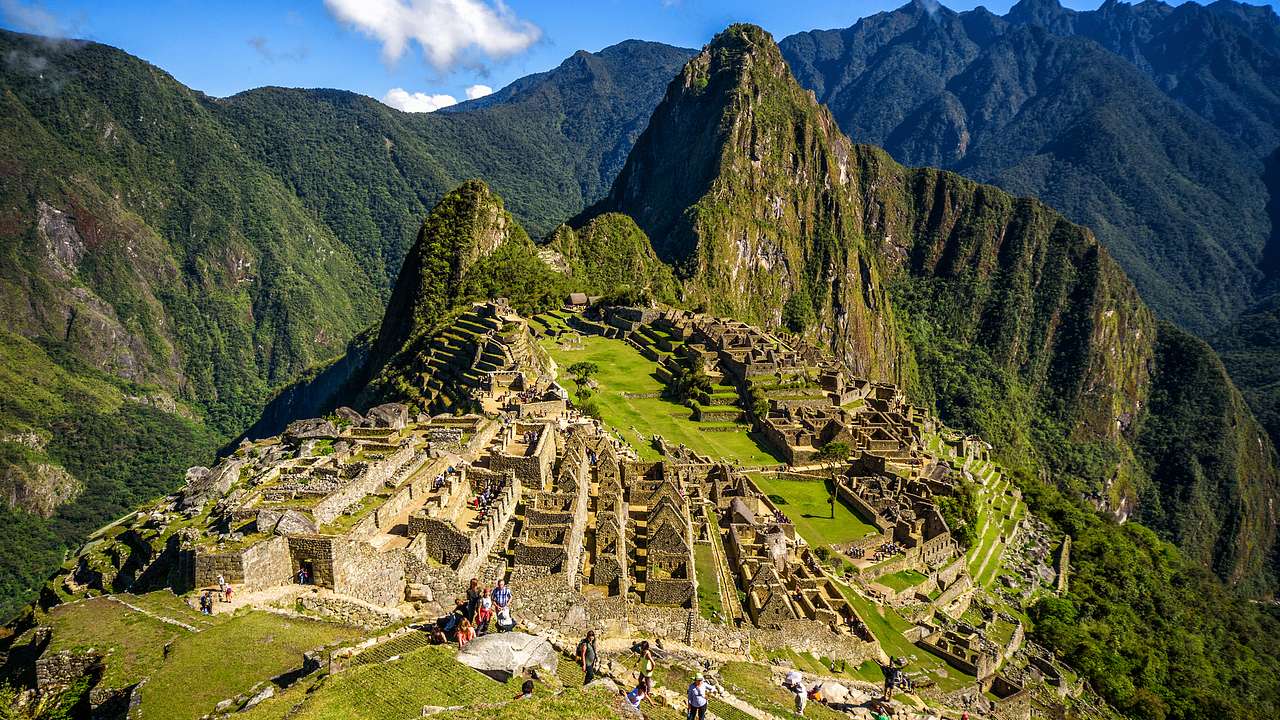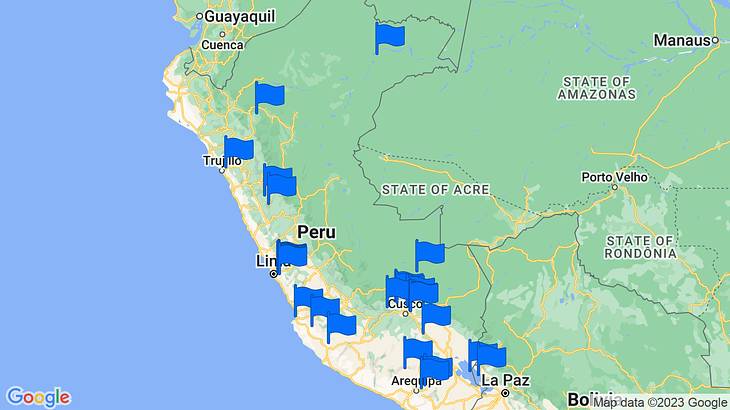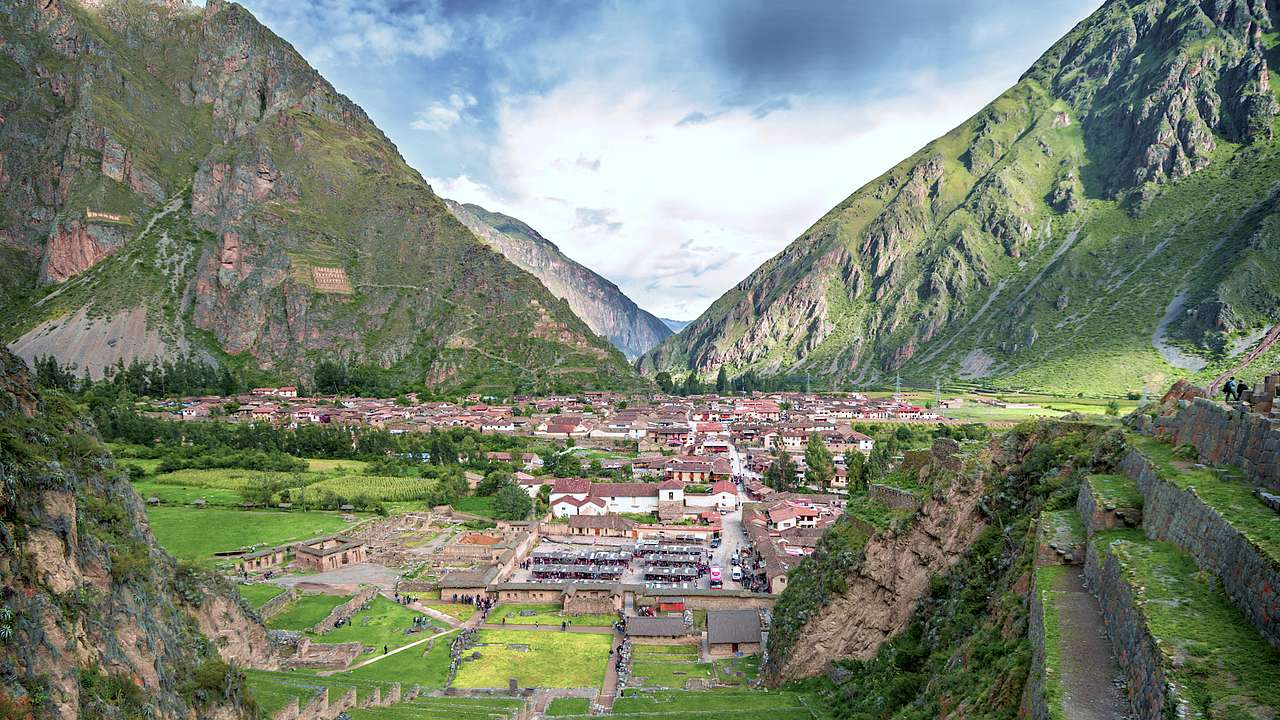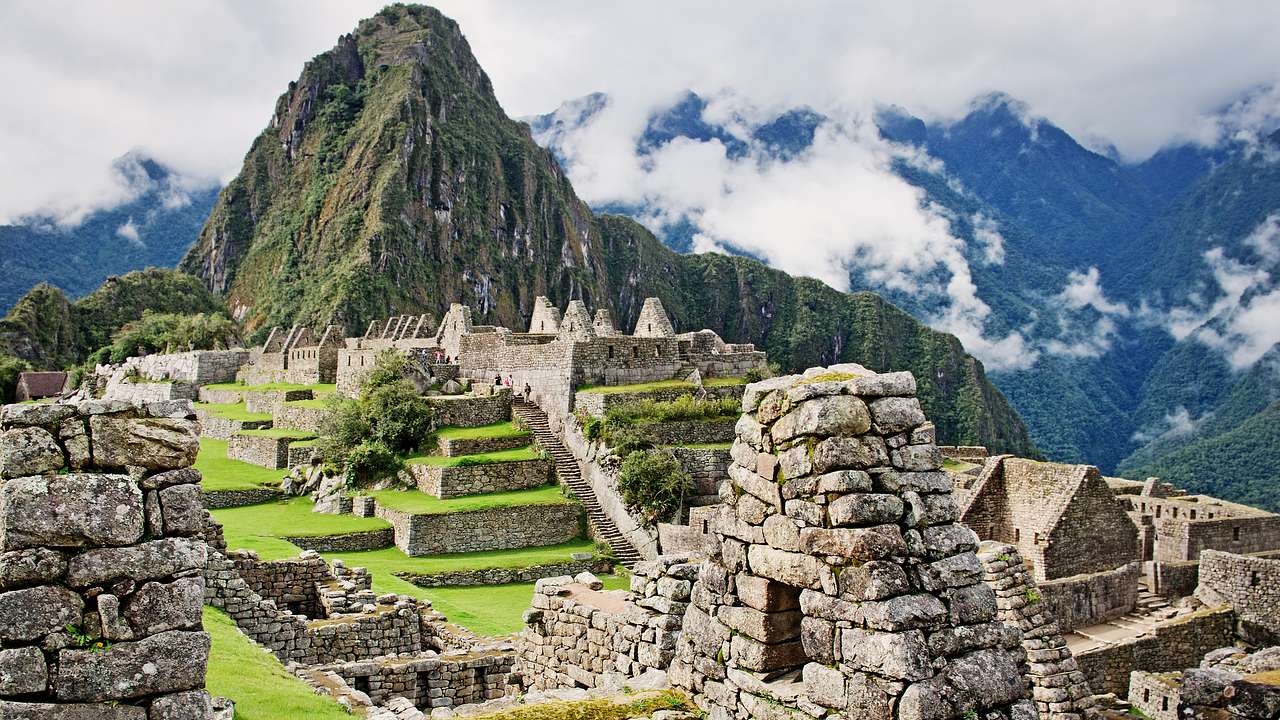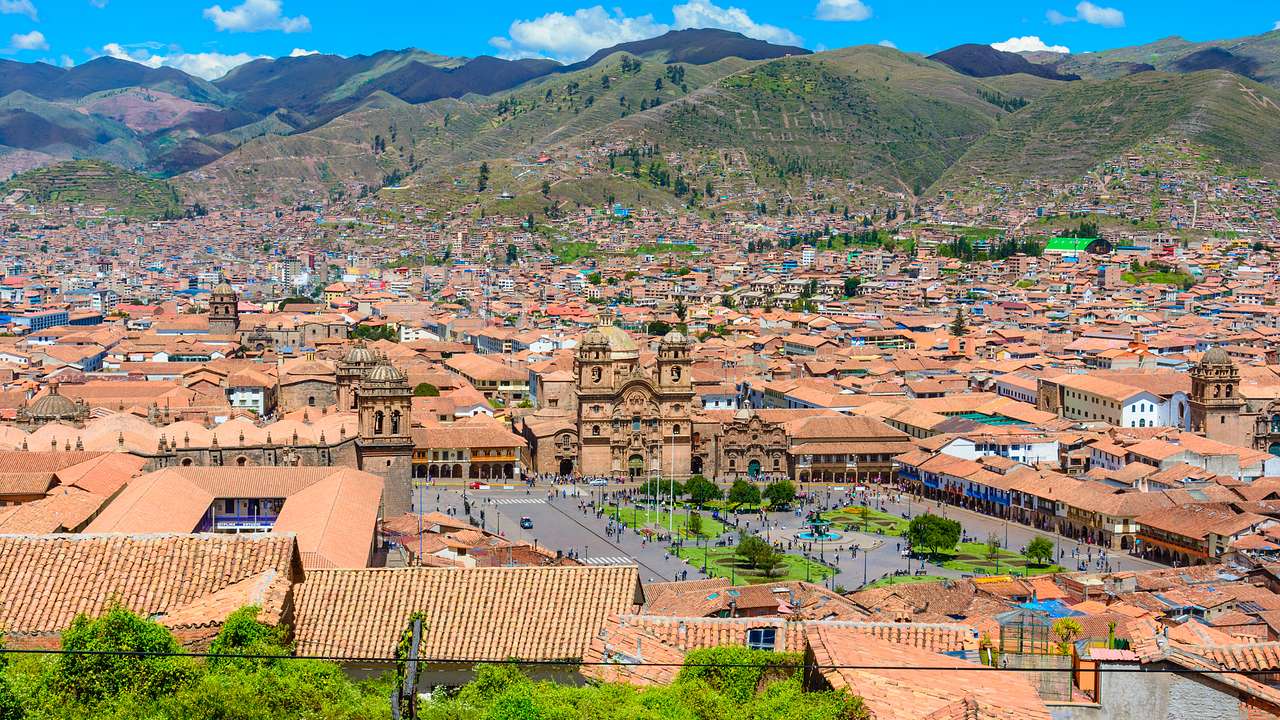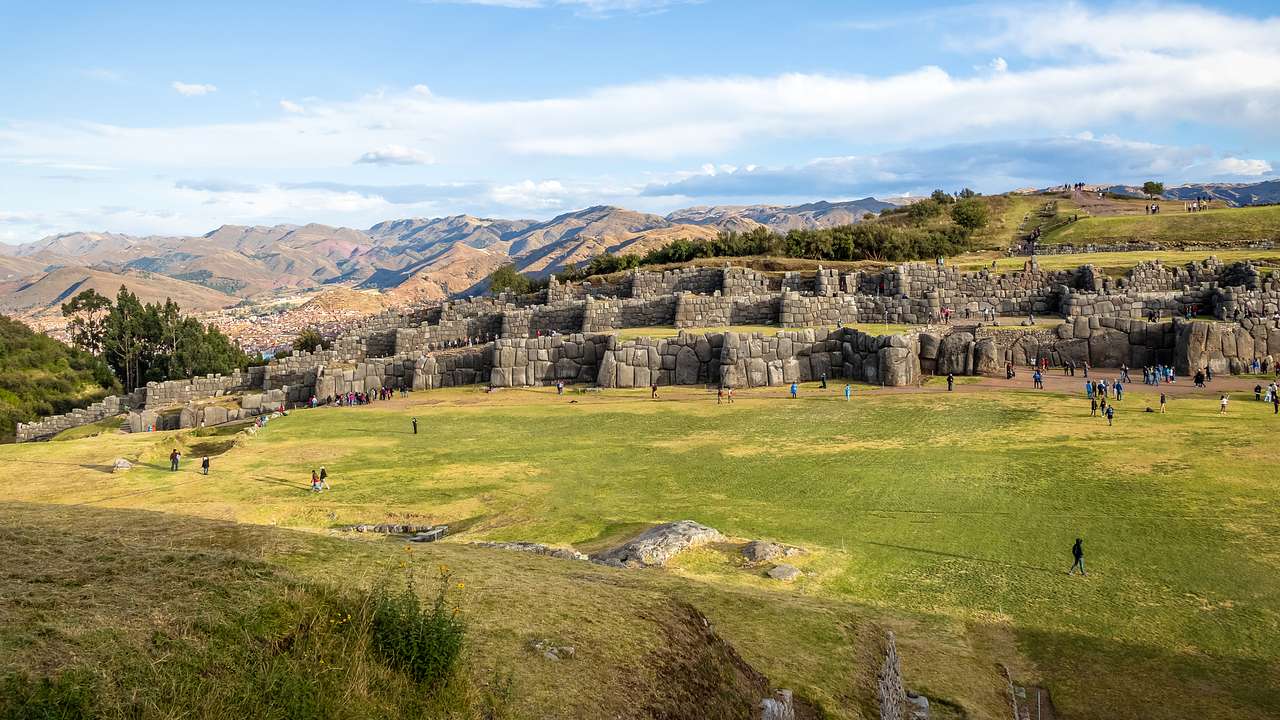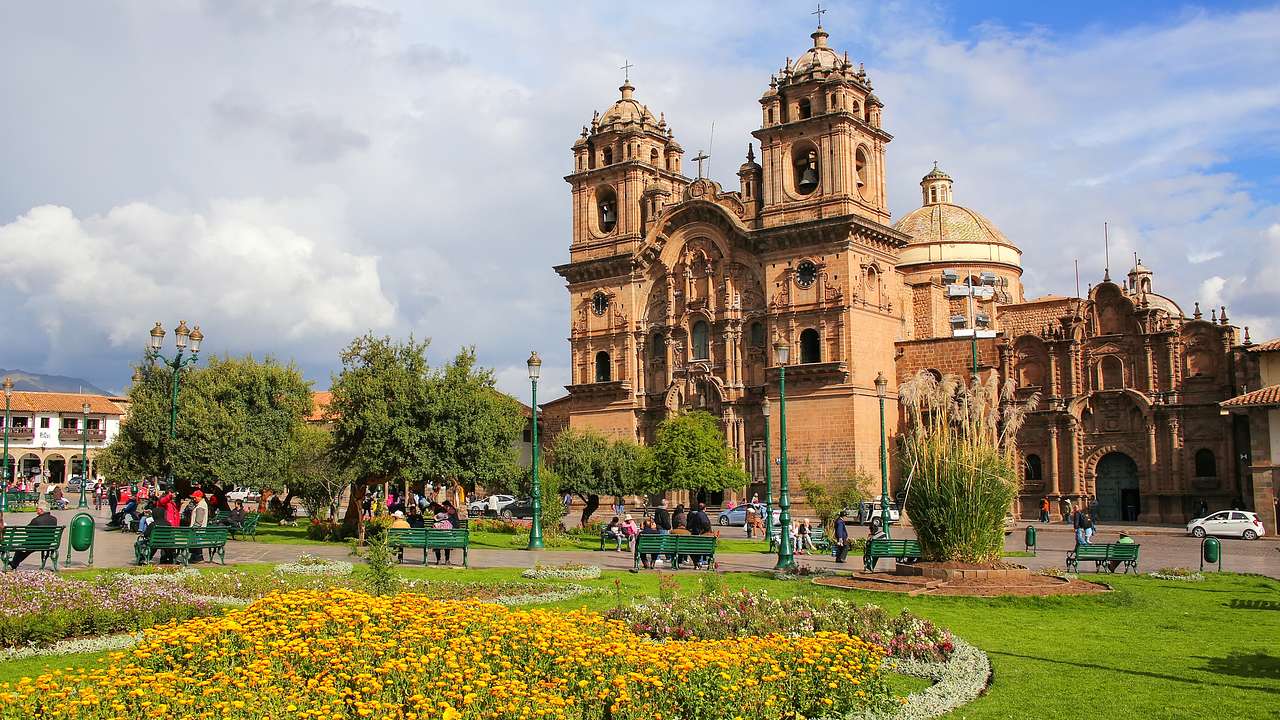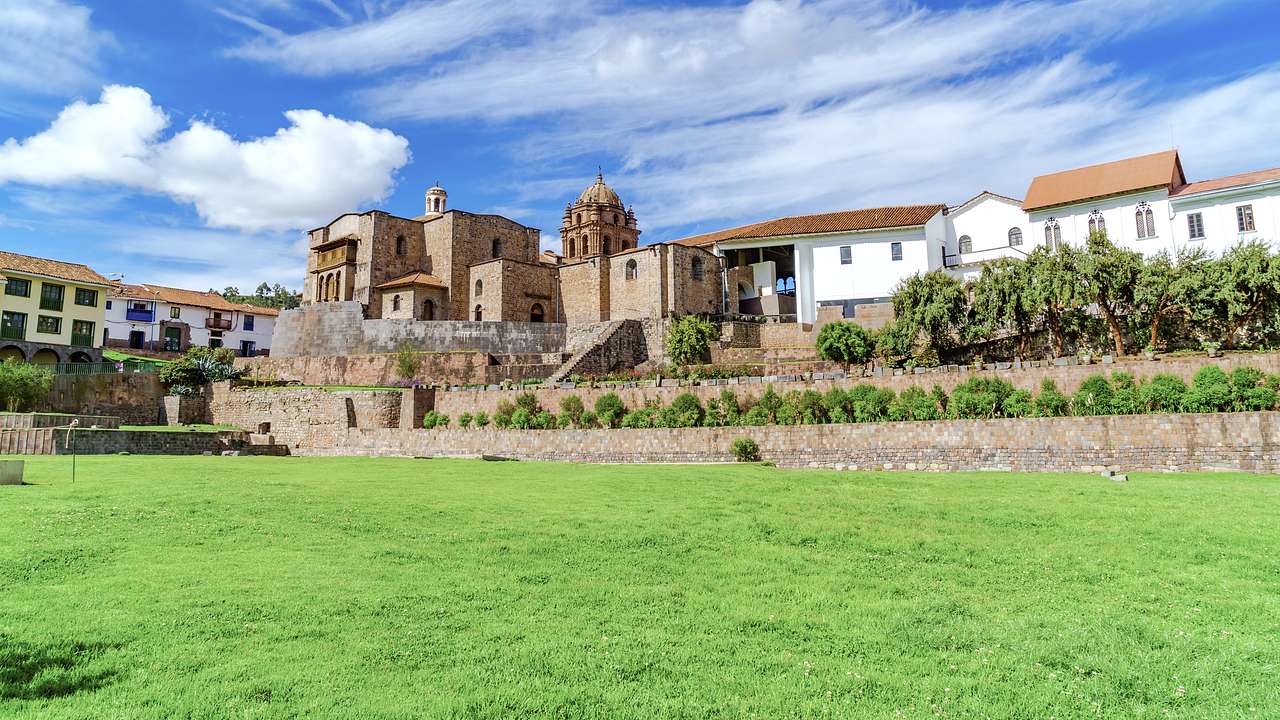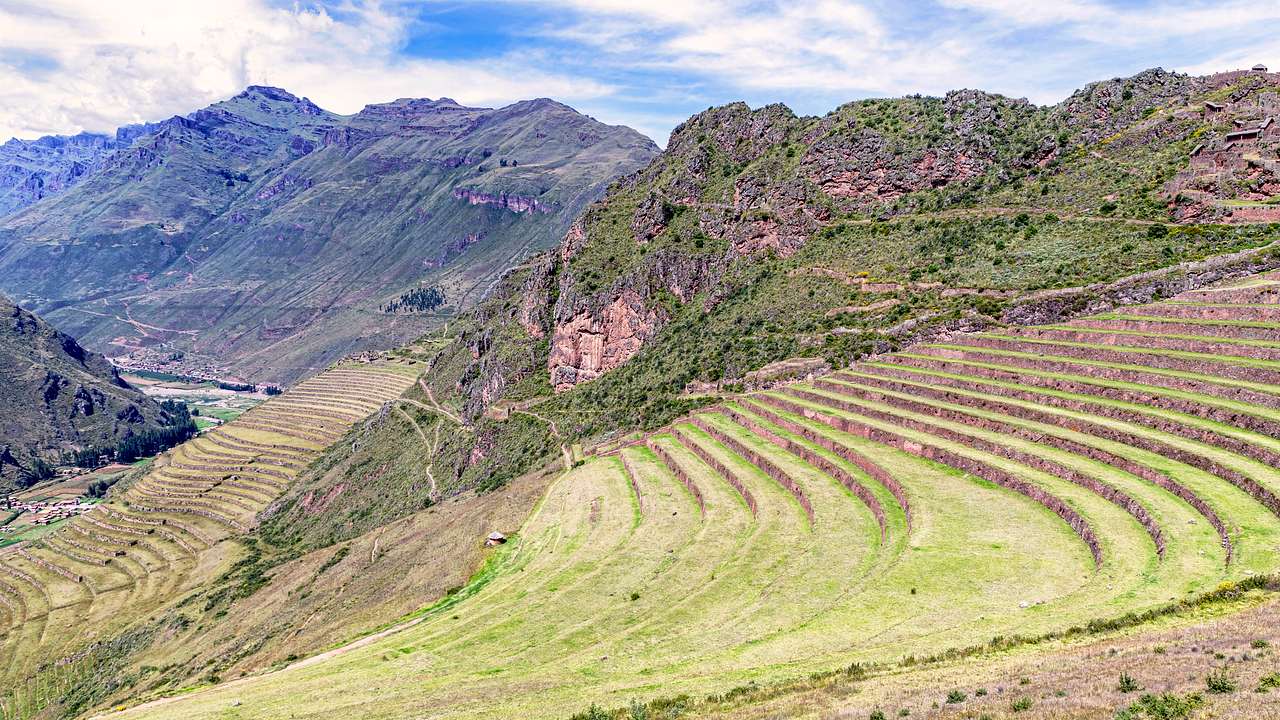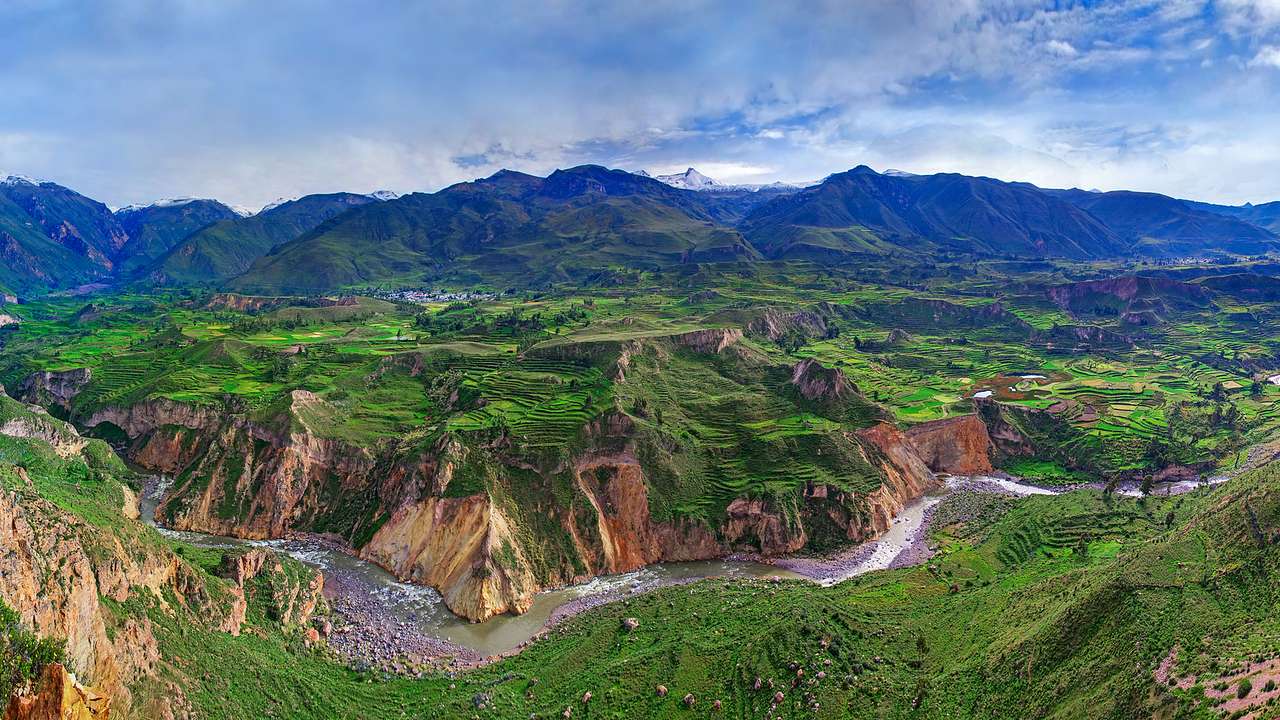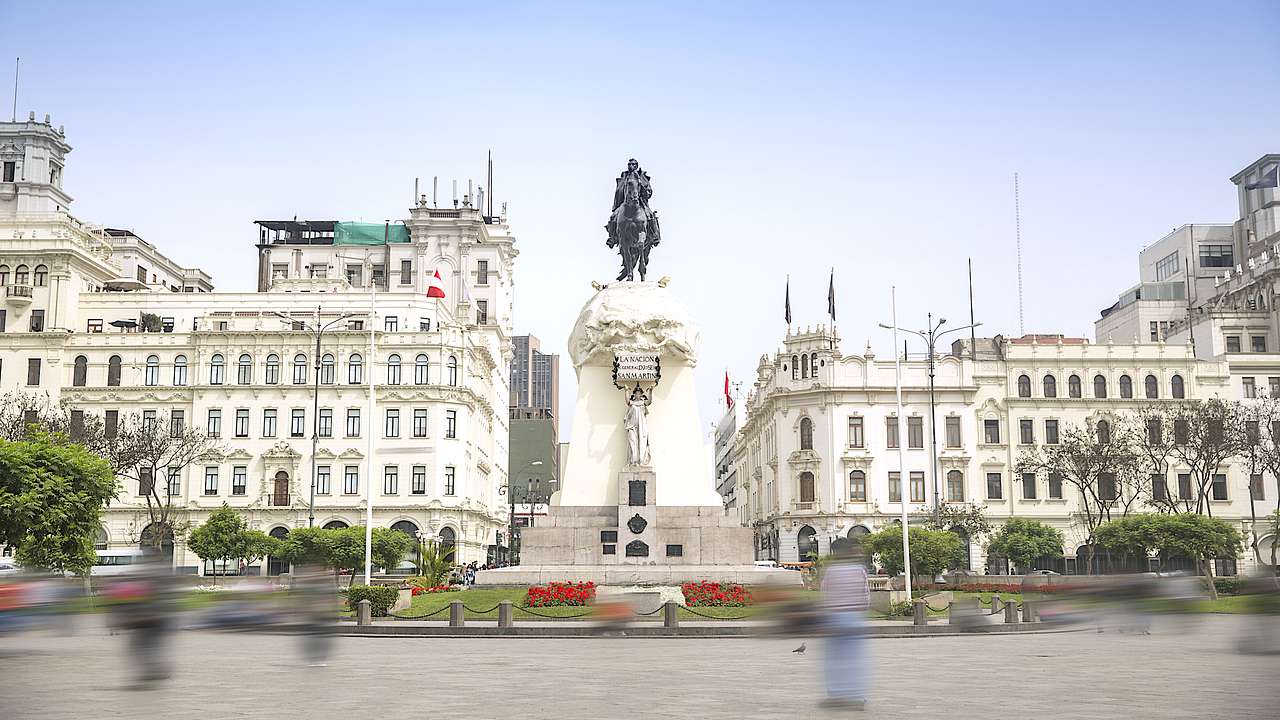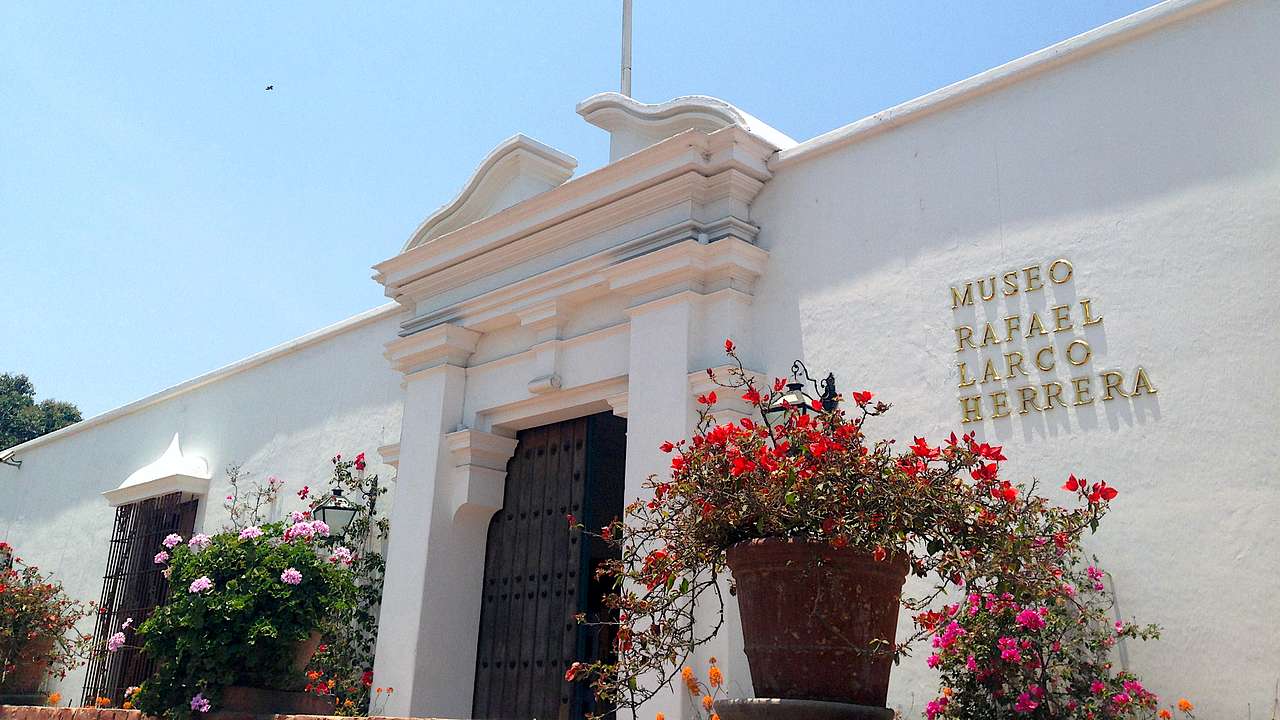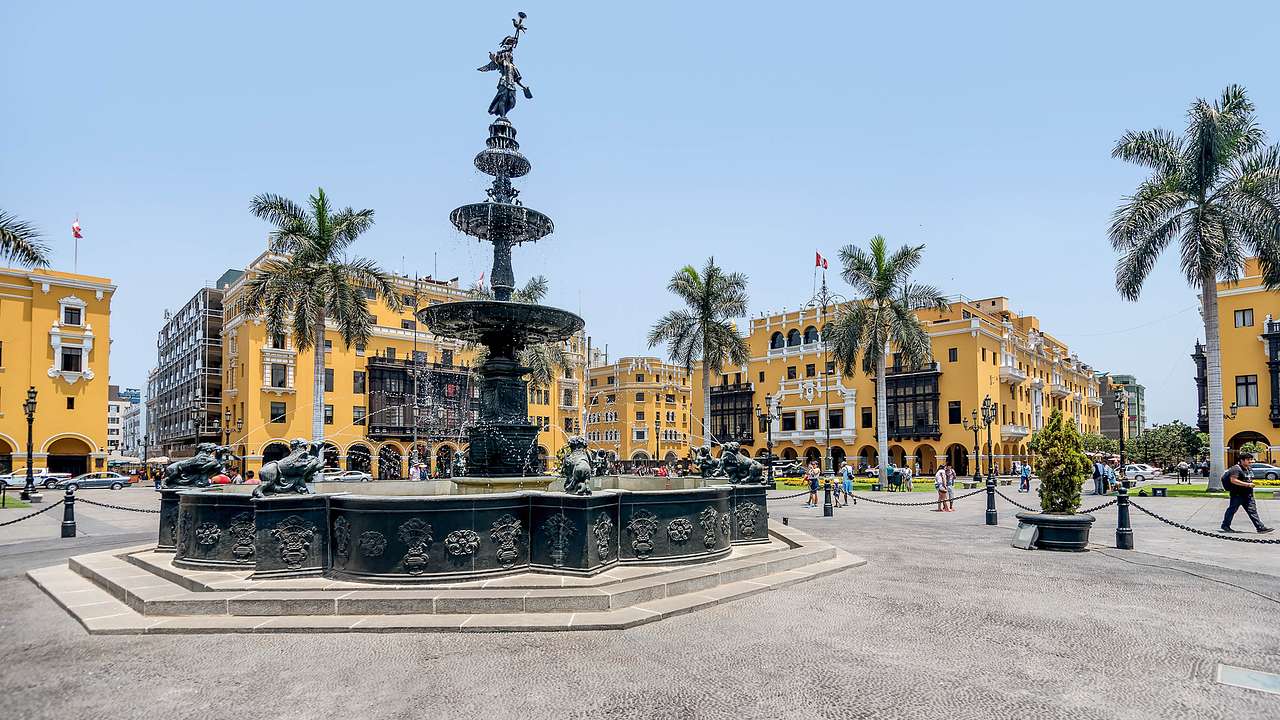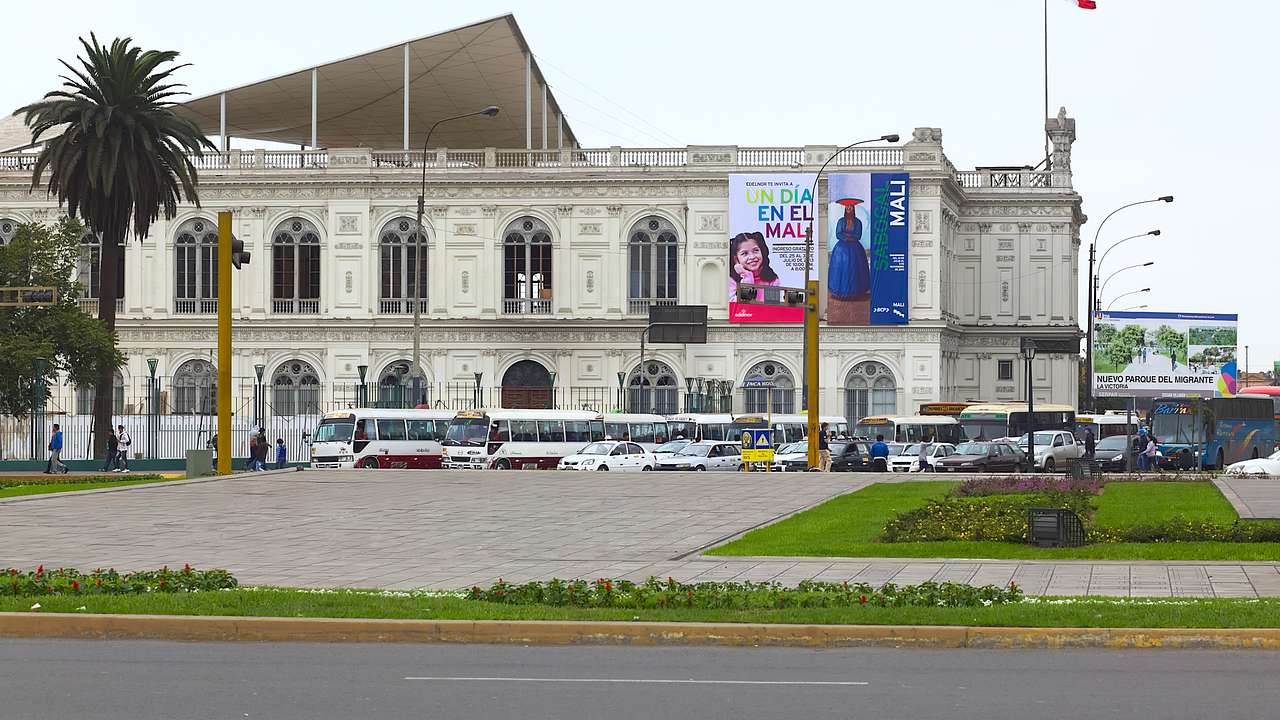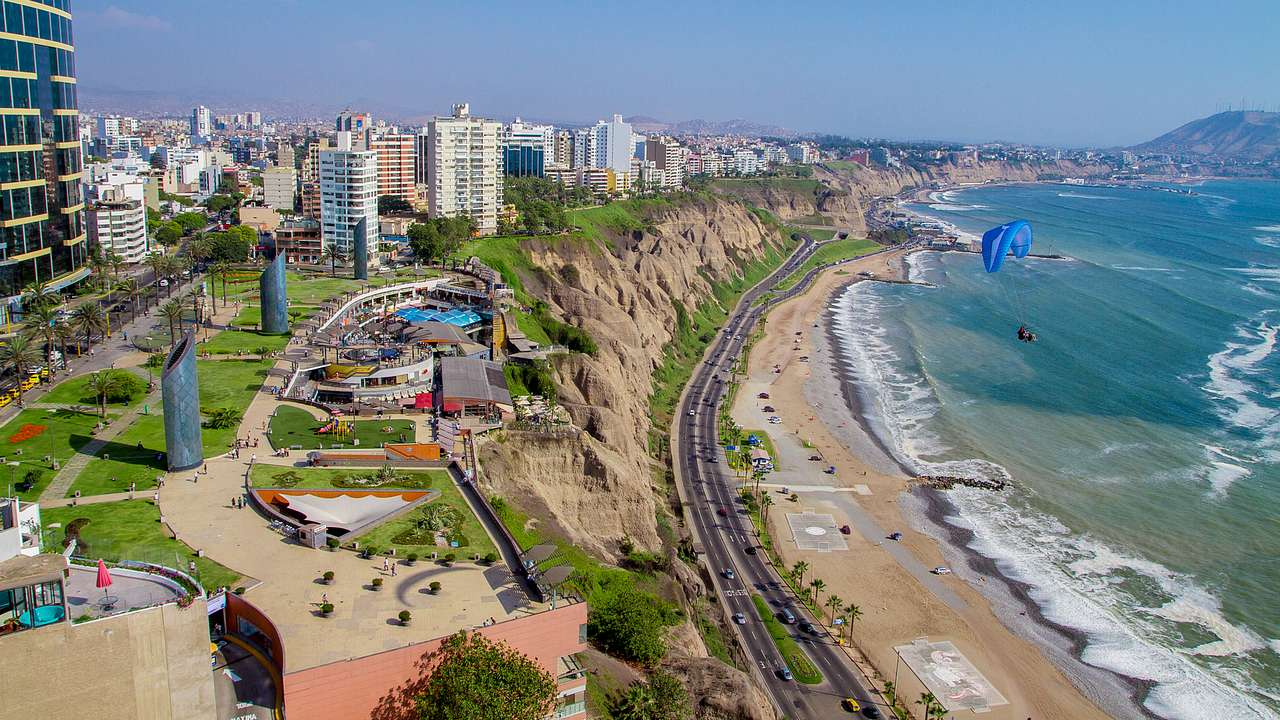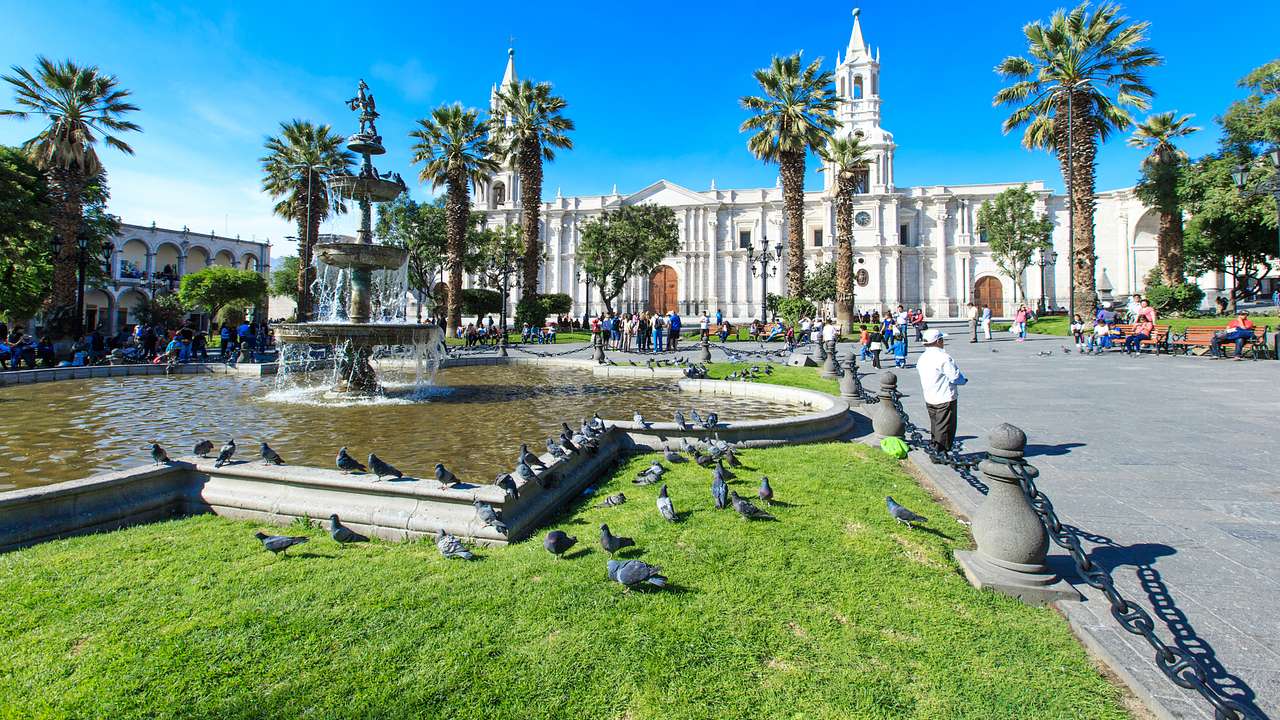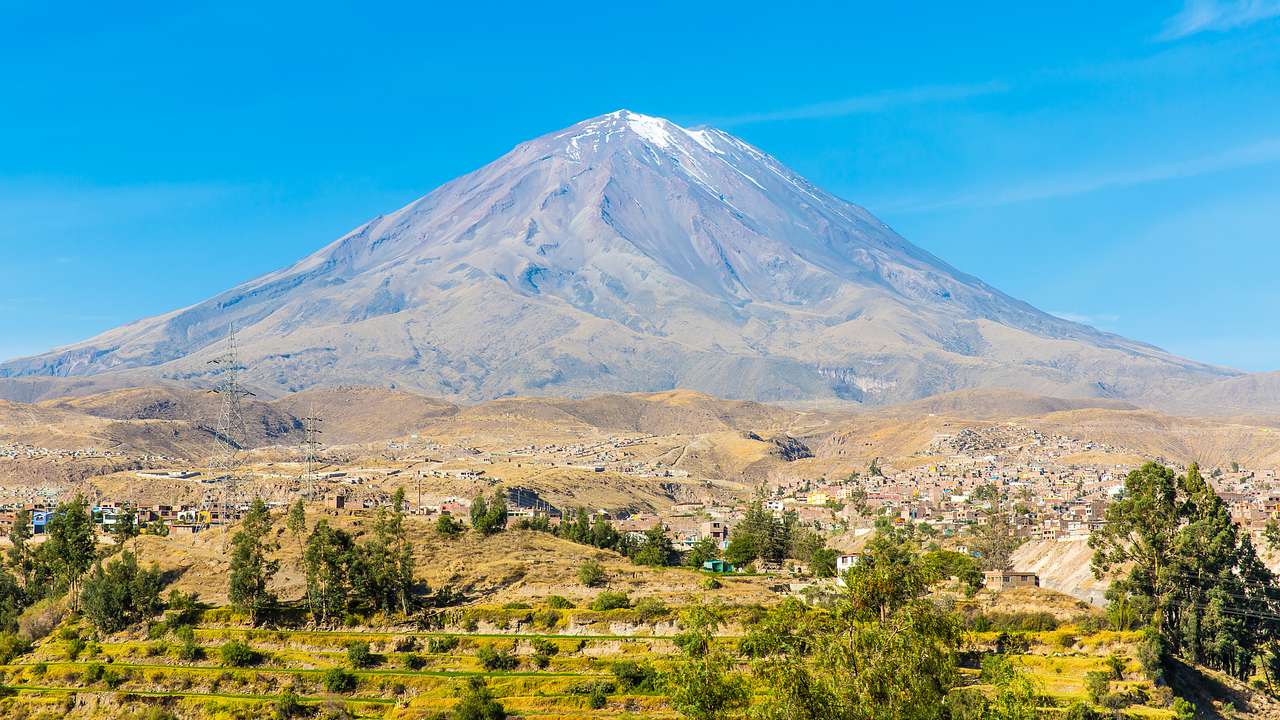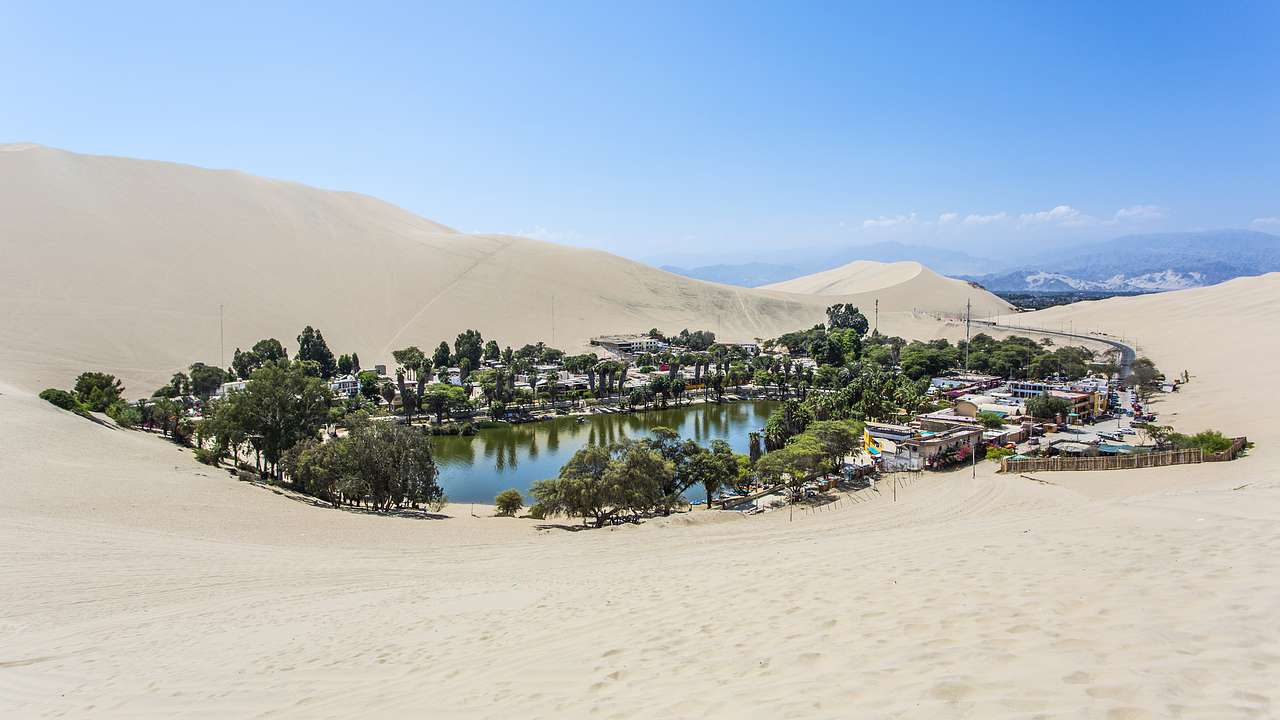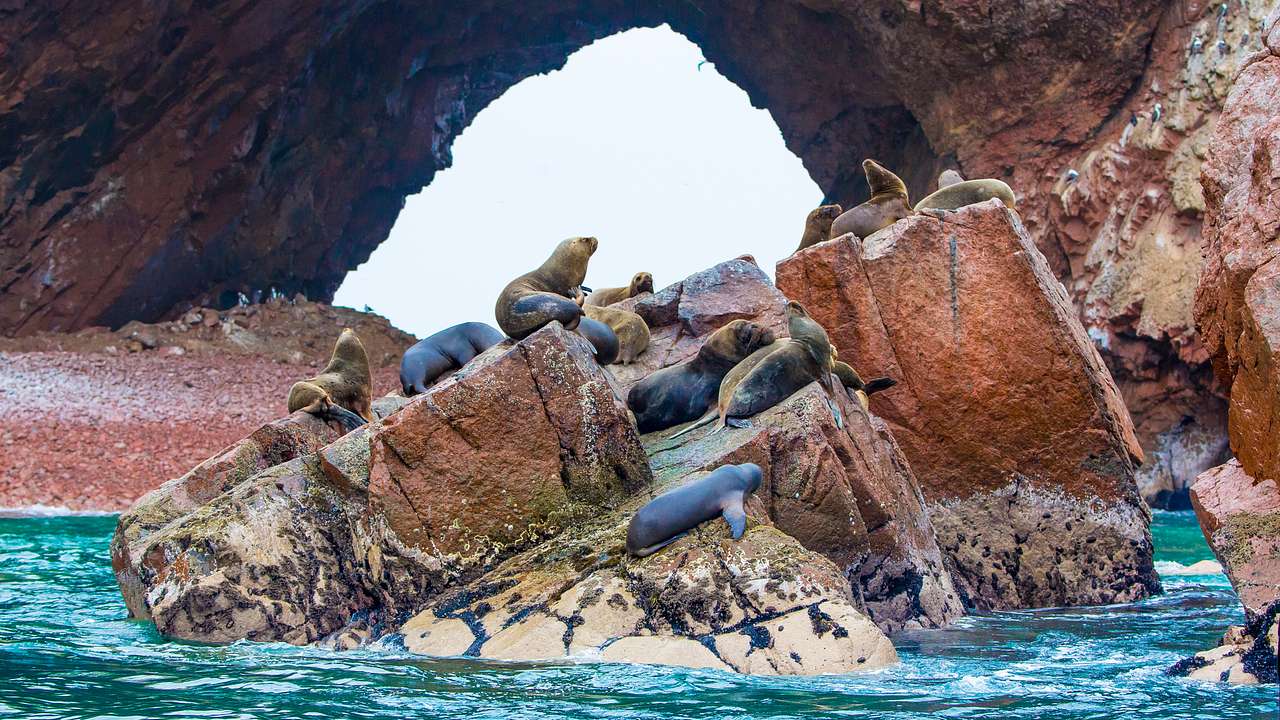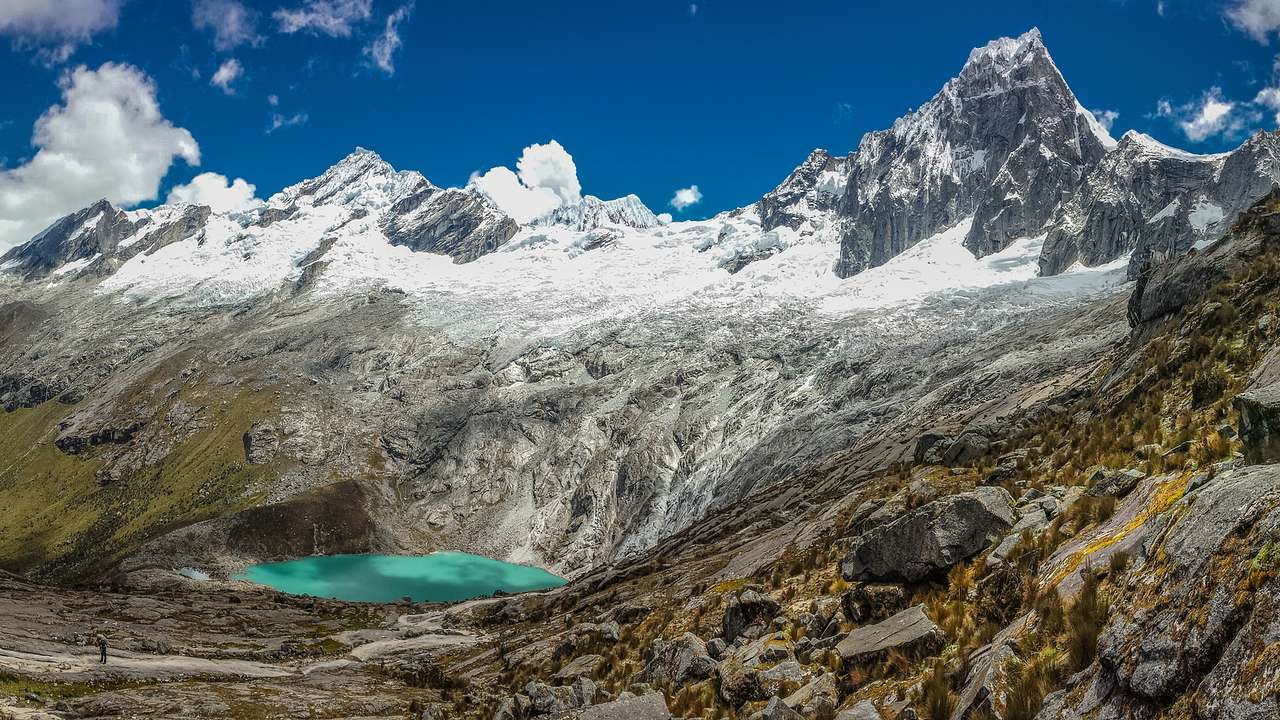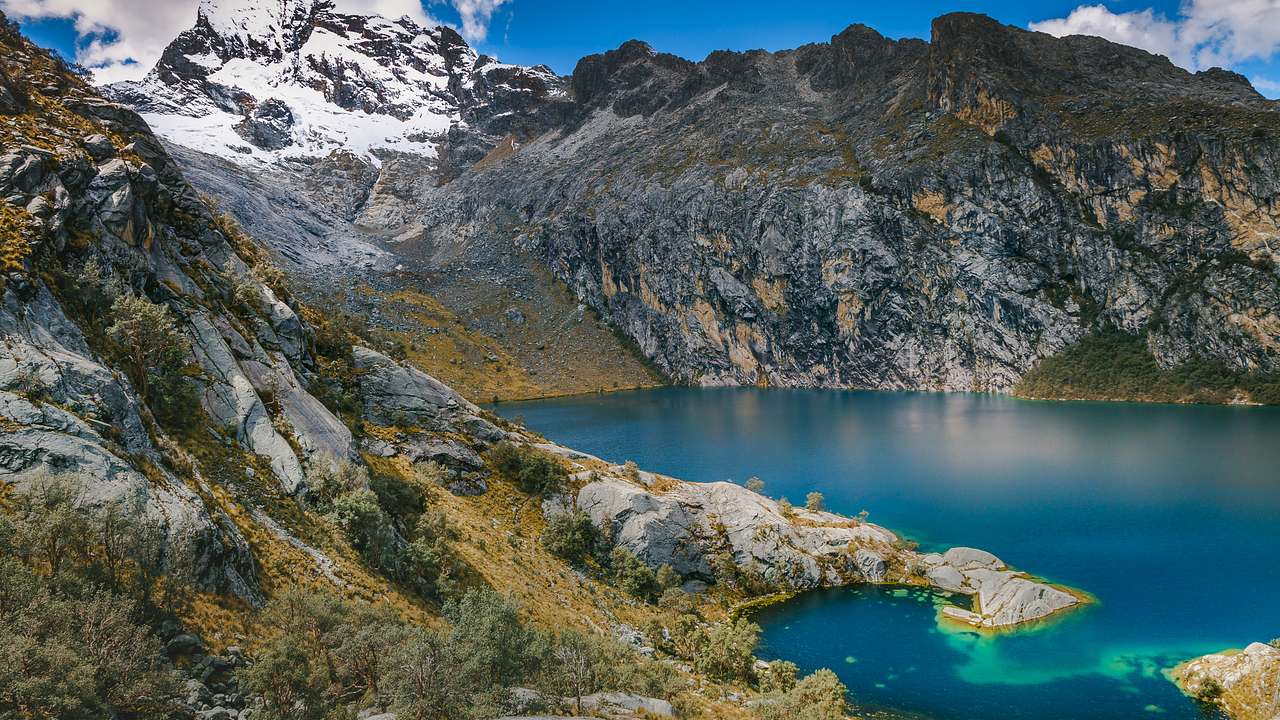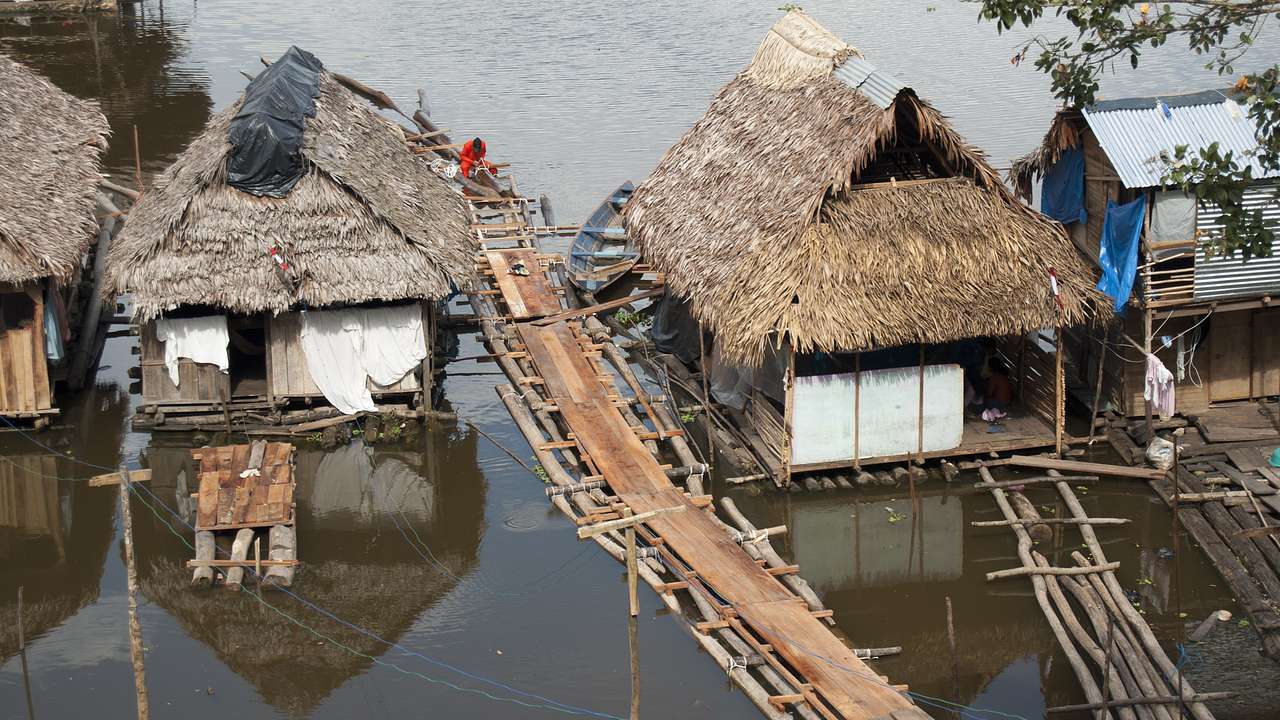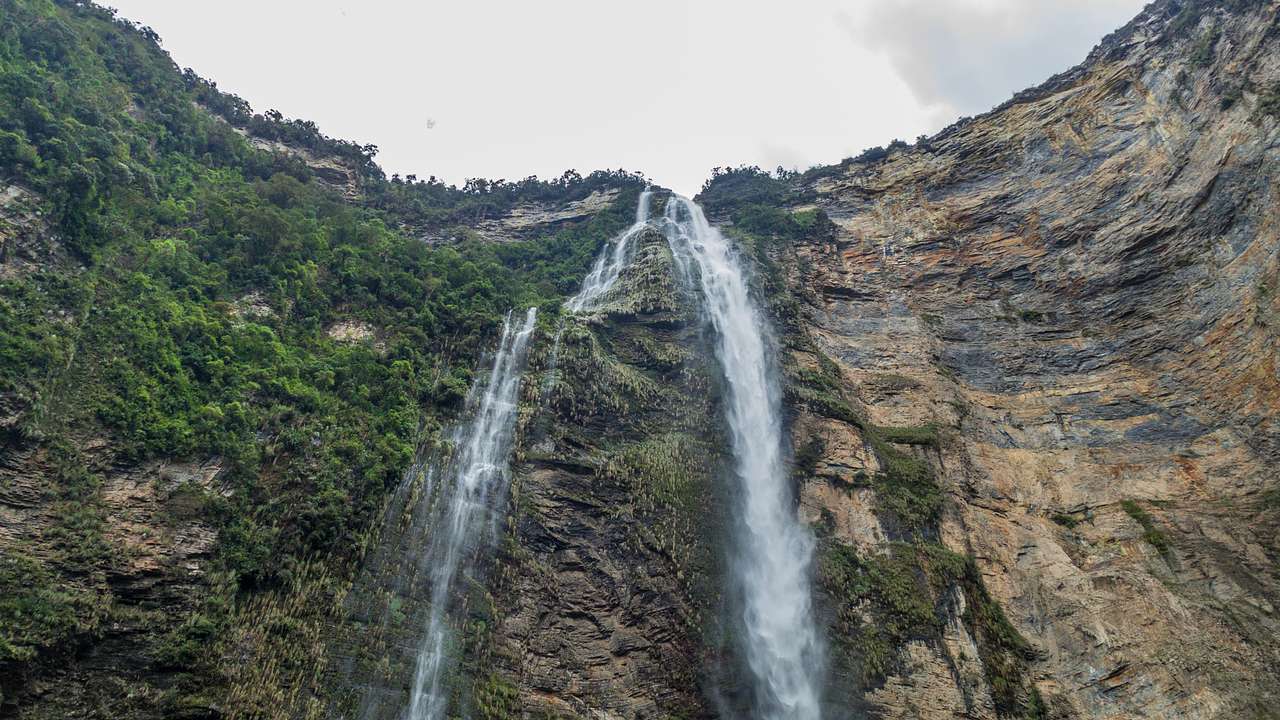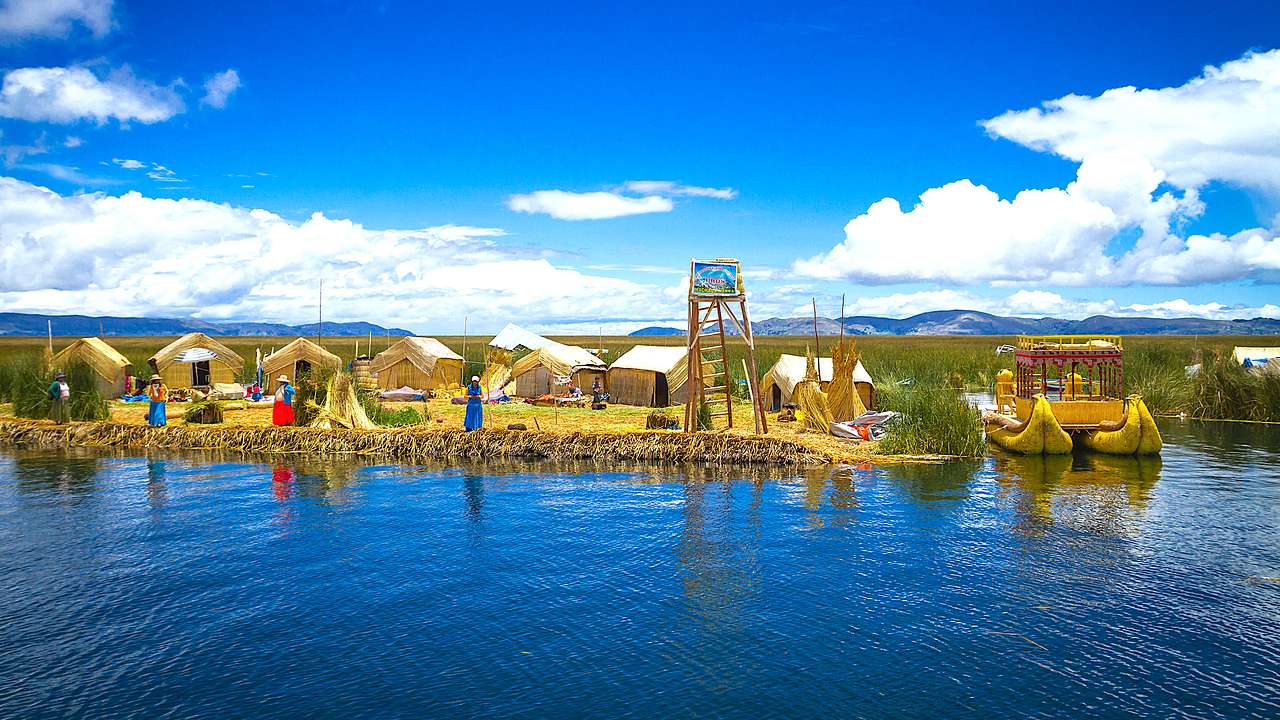30 Famous Landmarks in Peru to Visit
Destguides may receive commissions from purchases made through affiliate links in this article.

With many famous landmarks in Peru, this is a country of ancient ruins, beautiful sights, and an array of wilderness waiting to be explored.
But before you read about the best landmarks in Peru, it is important to understand a little bit about the country's history.
The Inca Empire played an important role in Peru's history, and the influence can still be seen throughout the entire country today. The empire stretched from Argentina to southern Columbia, with Cusco at the heart of the region.
The Incas ruled the Andean region of South America between the 1400s to the 1530s when the Spanish conquered the land - although it wasn't until 1572 when Vilcabamba became the final Inca city to be captured.
Many of these 30 famous Peruvian landmarks have Incan influence, as it was such a pivotal era in Peru's pre-Columbian history. Continue reading to learn more about them!
Heading to Peru and planning last-minute?
When visiting Peru, book your entrance tickets and tours before you go. Below are some top recommendations to get you started.
☂️ Top tours and experiences in Peru
- From Lima - Full-Day Paracas & Huacachina Bus Tour (likely to sell out)
- Cusco - Rainbow Mountain Day Trip & Red Valley Optional (likely to sell out)
- From Ica or Huacachina - Dune Buggy at Sunset & Sandboarding (likely to sell out)
- From Cusco - Full-Day Group Tour of Machu Picchu
- Lima City Tour & Catacombs Museum 04 Hours Private Tour With Guide in Lima (rated highly)
30 Famous Landmarks of Peru
- The Sacred Valley, Andes Mountains
- Machu Picchu, Andes Mountains
- The Inca Trail, Cusco
- The City of Cusco, Cusco
- Saqsaywaman, Cusco
- Cusco Cathedral, Cusco
- Qorikancha, Cusco
- Choquequirao Archaeological Park, Cusco
- Q'eswachaka Rope Bridge, Quehue
- Colca Canyon, Chivay
- Historic Center of Lima, Lima
- Barranco Square, Lima
- Cathedral of Lima, Lima
- Larco Museum, Lima
- Plaza de Armas, Lima
- The Lima Art Museum, Lima
- Miraflores Central Park, Lima
- Arequipa, Arequipa
- Misti Volcano, Arequipa
- Manu National Park, Madre de Dios
- Huacachina, Ica
- Ballestas Islands, Pisco
- Cordillera Blanca, Huascaran National Park
- Churup Lake, Huascaran National Park
- Amazon River, Iquitos
- Nazca Lines, Nazca Desert
- Chan Chan, Trujillo
- Gocta Waterfall, Bongara
- Lake Titicaca, Puno
- Taquile Island, Puno
Peru Landmarks Video
Check out our highlights video of Peru landmarks.
Peru Landmarks Map
A map of Peru landmarks. Use the map to explore all of the points of interest.
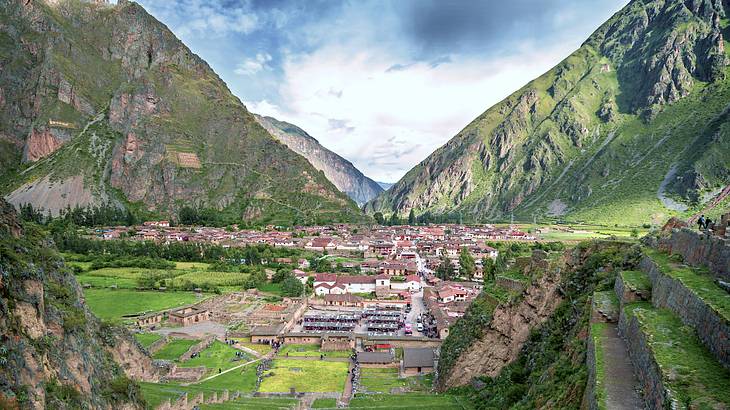
The Sacred Valley, Andes Mountains
The Sacred Valley made up the main region of the Inca Empire, along with Machu Picchu and Cusco, making it one of the most famous sites in Peru. It is a stretch of fertile land that goes for about 60 km and is where the colonial villages Pisac and Ollantaytambo still sit.
Making your way along The Sacred Valley and visiting some of these towns is a great way to learn more about the ancient cultures that dominated Peru, as well as finding some lesser-talked about ruins.
☂️ Visit the Sacred Valley on a tour
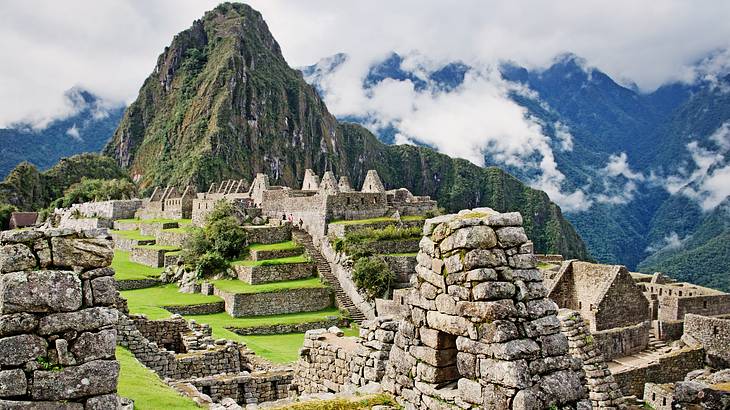
Machu Picchu, Andes Mountains
Machu Picchu is the most iconic Peru landmark that is situated in the Andes Mountains and overlooks the Urubamba River valley. It was initially built in the 15th century but later abandoned.
Today, it is a popular tourist destination, even for traveling families, and takes around four days to reach on foot. It is classed as one of the New Seven Wonders of the World.
Although nobody is quite sure why Machu Picchu was originally built, many people travel to see the mysterious stone structures. These ruins showcase the high skill of the Inca people and are part of one of the most famous historical sites in Peru and in the world.
☂️ Visit Machu Picchu with an experience
- Full Day Tour to Machu Picchu From Cusco (highly rated)
- Two-Day Tour - Sacred Valley & Machu Picchu by Train (a hit among most)

The Inca Trail, Cusco
If you choose to hike the whole way to Machu Picchu, the best way to do this is along the Inca Trail. This is a 4-day journey that begins just outside of Ollantaytambo and ends at the Inti Punku Sun Gate. It is definitely an activity for your ultimate bucket list!
While it is a relatively short 40 km trek, most of the journey is up steep and mountainous terrain, making it fairly difficult for some people to complete.
If you want to see part of the Inca Trail but don't think you could manage four days, booking a shorter guided tour is the best compromise. Everyone who makes the journey along the Inca Trail will need to obtain a permit, but the incredible views at Inti Punku and the sunrise are worth it.
☂️ Experience the Inca Trail with a tour
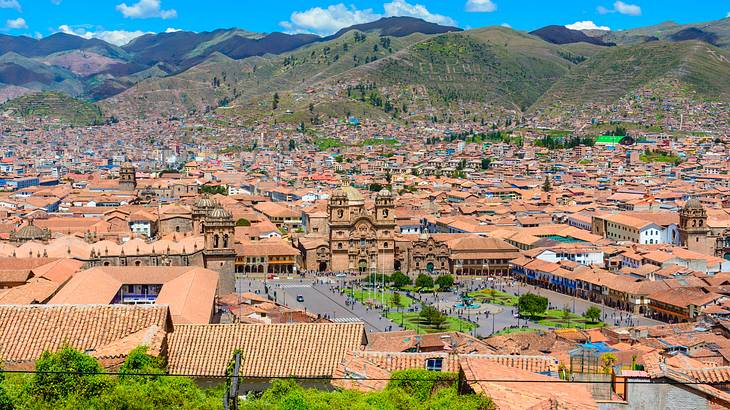
The City of Cusco, Cusco
Cusco is a charming city in the southeastern part of Peru, near the Andes Mountain range. The entire city is designated as a UNESCO World Heritage Site and is considered the Historical Capital of the country by the Peru constitution.
There is so much to see in Cusco, most of the old colonial buildings that can be found in the center of the city were built upon ancient Inca ruins, and the history can still be seen in the walls today. Best of all, you can find many excellent places to stay in Cusco near all the top landmarks and attractions.
☂️ Experience Cusco with a tour
- Private Tour to Machu Picchu Full Day (rated highly)
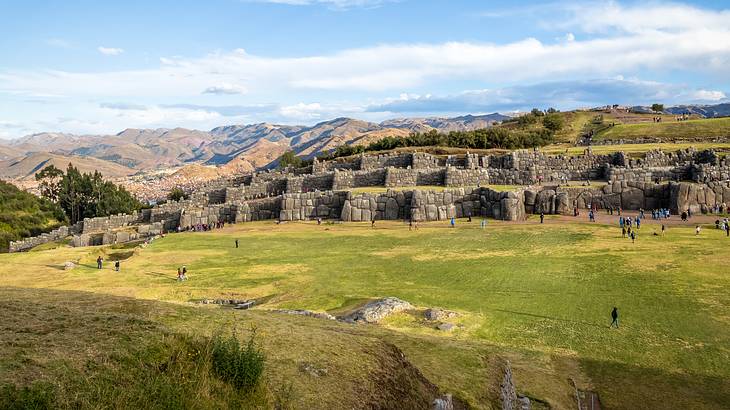
Saqsaywaman, Cusco
Meaning 'Royal Eagle,' Saqsaywaman is an archeological site just 2 km north of Cusco's main square. The Inca constructed this citadel during the 15th century, and although the Spanish will have destroyed much of the large stone wall, many of the pieces still stand today.
Saqsaywaman is an impressive 4 meters tall, and many of the stones used to create the wall weigh over 100 tons - making it even more impressive that they managed to complete this.
☂️ Experience Saqsaywaman with a tour
- Six Days Exploring Cusco, Sacred Valley & Machu Picchu (highly sought-after)
- Cusco City Tour Four Ruins Half-Day Tour (highly rated)

Cusco Cathedral, Cusco
One of the most important sites in the historical city of Cusco is the Cusco Cathedral, a baroque building located on the iconic Plaza de Armas. The cathedral was initially completed in 1724 after taking almost 500 years to build.
Inside the cathedral is even more impressive than the exterior, perhaps because of the famous last supper depiction and other artwork that lines the walls, alongside the gold in abundance. Visitors should make sure to enter through the left door, around the side of the facade of the cathedral.
☂️ Visit Cusco Cathedral with a tour

Qorikancha, Cusco
Known as Coricancha, Koricancha, or Qorikanch, this is an ancient Incan temple in Cusco that played an important role in the Inca Empire.
Sadly, much of the temple was ruined in the 16th-century after the Spanish Conquistadors used parts to build churches and houses for their settlers.
As well as this, a large portion of the stonework was used to build the Santo Domingo Convent after the original one was destroyed in a devastating earthquake.
Today, it's an impressive Peru landmark to visit, and there's also a nearby underground museum that contains mummies, materials, and sacred items from the site.
☂️ Visit Qorikancha on a tour
- Eight-Day All Included Excursión - Cusco & MachuPichu Amazing (frequently earns a five-star rating)
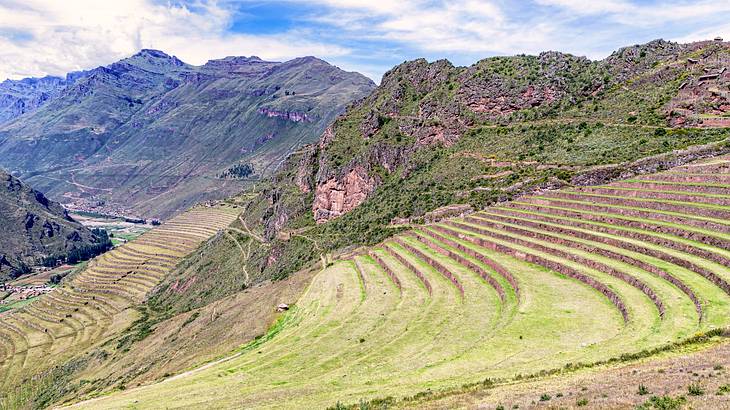
Choquequirao Archaeological Park, Cusco
Found in the south of Peru, Choquequirao Archaeological Park is another famous Inca site that was home to an ancient civilization.
Even if you have previously visited Machu Picchu, it's worth paying a visit to this site as it is so unique - artwork adorns the ruin walls, and there is an incredible array of wildlife in the area.
A full trek to Choquequirao Archaeological Park will take you around five days to complete, compared to the nine days it takes to hike to and from Machu Picchu.
The region is very mountainous, which means that this trek is fairly challenging but is suitable for most people to climb.

Q'eswachaka Rope Bridge, Quehue
Earning its prestigious title of the 'last remaining Inca rope bridge,' Q'eswachaka Rope Bridge crosses over the Apurimac Canyon. The bridge is 118 feet long and hangs 60 feet above the water below.
These bridges were once very common in Incan roads. Women would weave grass into small ropes, and then the men would turn these into large braided cables for support - similar to modern bridges.
While it can feel pretty terrifying to walk across this swinging bridge, you should try crossing this unique Peru landmark.
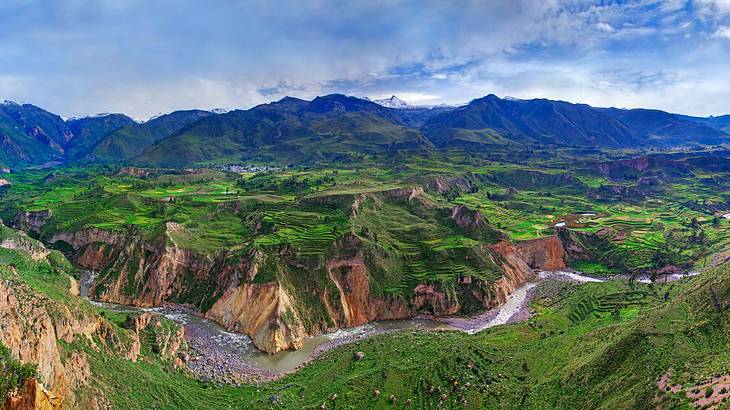
Colca Canyon, Chivay
With a depth of 11,100 ft, which is twice that of the Grand Canyon, Colca Canyon is the fifth most popular tourist destination in Peru. The canyon area is filled with lots of wildlife, with herds of Vicunas (similar to llamas) and giant hummingbirds most commonly found nearby.
The treks at the canyon are breathtaking - on the descent, you will pass stunning valleys, thermal springs, and brilliant spots for camping. This is easily one of the best things to do during a trip to Peru.
☂️ See Colca Canyon on a tour
- Colca Magic Destination (rated five stars)
- Two day One Night Trek Colca Canyon (well-attended)

Historic Center of Lima, Lima
Like the city of Cusco, the Historic Center of Lima is another area that makes up an important landmark in Peru. Nicknamed "the city of the Kings," this was the most important capital in South America all the way up until the 18th century.
Because the city was so integral to the region, the buildings that still stand have great political, economic, and historical significance to Peruvians today. They represent the importance of colonial times and are well preserved to learn more about them.
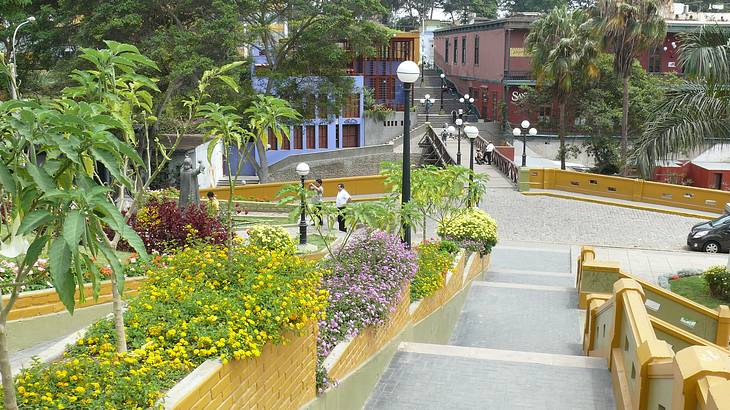
Barranco Square, Lima
Barranco is one of the most famous districts in Lima, known for its romance and bohemian feel. In the day, Barranco Square is beautiful and fronted by the iconic library, but it transforms into a paradise in the summer evenings.
At night, Barranco Square has been compared to Disneyland - the area is lit up and filled with locals and tourists alike who have come to appreciate the square's beauty and pay a visit to the stunning bridge of sighs.
☂️ Visit Barranco with an experience
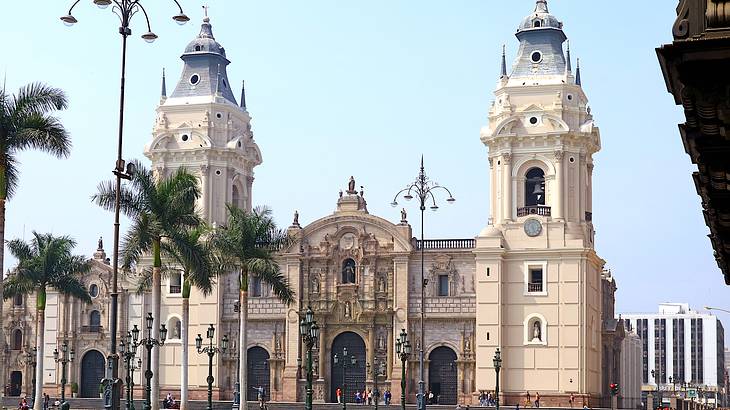
Cathedral of Lima, Lima
The Cathedral of Lima is arguably one of the most beautiful baroque cathedrals in the entire world. It is located in the Plaza Mayor in downtown Lima and was initially constructed in 1649. It was dedicated to St John, the famous Apostle and Evangelist.
Whether you are religious or not, it is worth visiting the stunning cathedral and stepping inside to view the colorful religious artwork that adorns the walls - it is a place that means a lot to the many religious residents of Lima.
☂️ Visit the Lima Cathedral with an experience
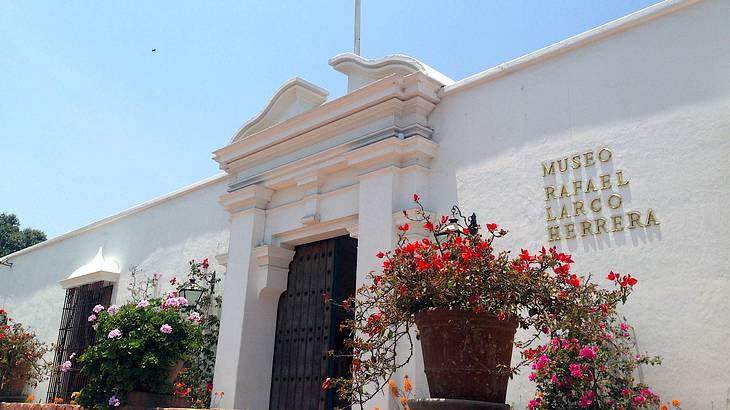
Larco Museum, Lima
The Larco Museum is an impressive, privately-owned museum showcasing pre-Columbian history. It is situated in the Pueblo Libre area of Lima. The 18th-century building was transformed into a museum in 1926 by Rafael Larco Hoyle, whom the museum is named after.
The museum also boasts a beautiful garden and on-site cafe, so you can grab a bite to eat after a morning of exploring the antiques on display. Tickets can be purchased in advance on their website.
☂️ Visit the Larco Museum with a tour
- Private Full-Day Best of Lima Tour (rated highly)
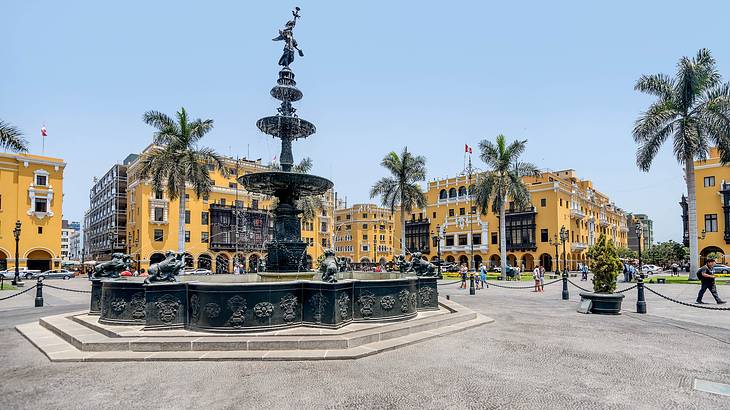
Plaza de Armas, Lima
One of the major landmarks in Peru is the Plaza de Armas in Lima. Known as the city's birthplace, it is one of the most important areas in the whole of Peru today.
The area is surrounded by the Government Palace and Lima Cathedral, and other important landmarks in Peru that make up the Government of Peru.
The Plaza de Armas also has significant cultural value - it's the place where Peruvians will gather to celebrate and protest together.
☂️ Visit Lima Main Square on a tour
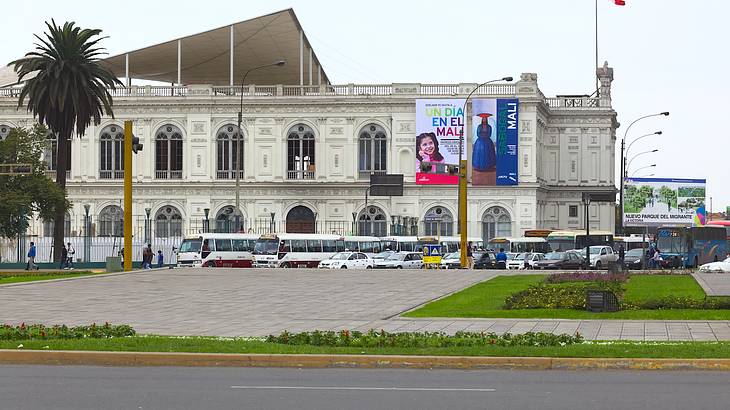
The Lima Art Museum, Lima
The Lima Art Museum in Peru showcases some of the most incredible Peruvian talents in the world of art and photography and a large portion of pre-Columbian textiles and fabrics that date back to colonial and republican times.
It is an inexpensive museum and a very affordable way to learn more about pre-Columbian Peru (and modern-day). The museum is open for general admission on Thursdays and Saturdays.
☂️ Join a tour to see the Museo de Arte de Lima
- Private Tour With Guide in Museo de Arte de Lima - MALI (widely acclaimed)
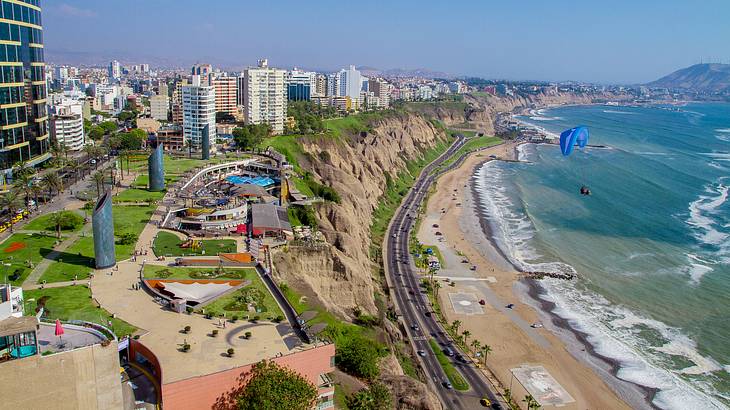
Miraflores Central Park, Lima
As one of the most famous places in Peru, Miraflores Central Park is a gorgeous urban park located in the Miraflores part of Lima and the perfect spot to relax.
Also known as Kennedy Park (mysteriously named after President Kennedy), this is the city center and where locals gather to unwind - you will find that this park is bustling on a Friday evening.
There are many things to do in the park, from relaxing with a picnic and spotting the groups of Peruvian cats that call this park home to taking a bike tour of the park.
☂️ Experience Kennedy Park with a tour
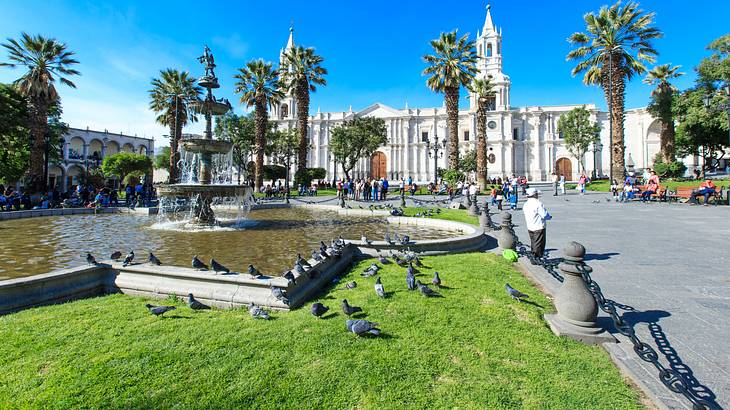
Arequipa, Arequipa
Arequipa is one of the most important cities in Peru and is an area filled with many popular landmarks. This is mainly because three volcanoes surround it, and its buildings have been crafted from sillar - a white, volcanic stone.
There are plenty of buildings with immense historical importance that you should explore when you visit, including the Santa Catalina Monastery and the Andean Sanctuary Museum. Both of these places explain Arequipa's links to the Inca Empire and why it is so important to Peruvians today.
☂️ Experience Arequipa with a tour
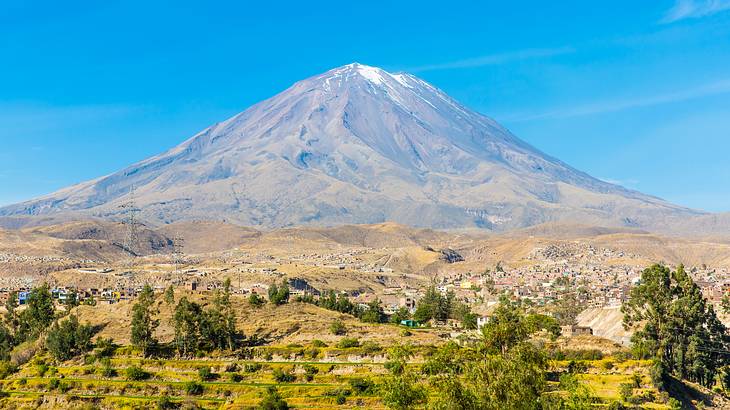
Misti Volcano, Arequipa
The Misti stratovolcano is an incredible natural landmark in Peru made of andesite, dacite, and rhyolite. It's actually one of the three volcanos that frame the town of Arequipa and is a great day trip for those in the area.
Misti last erupted in 1985 and is one of Peru's most active volcanoes, although it currently lays dormant and is safe for tourists to visit.
The easiest way to get there is to take transport to Arequipa and then take a tour to the volcano - although confident climbers can make the journey without a guide.
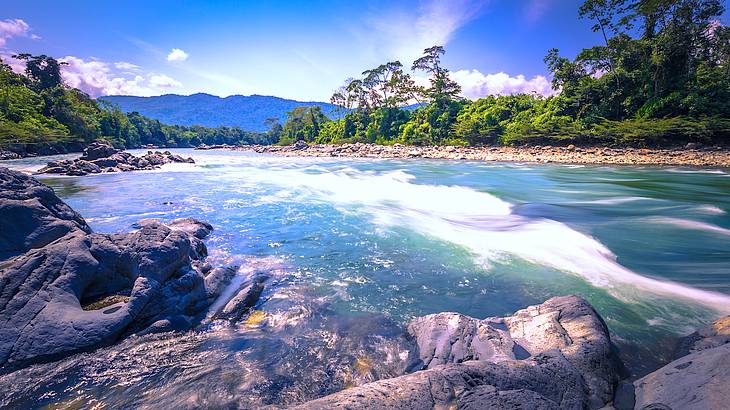
Manu National Park, Madre de Dios
Located in southeastern Peru, Manu National Park is a Biosphere Reserve that stretches across 1.5 hectares and encompasses highlands, lowlands, and even cloud forests.
The area is famed for its biodiversity, including hundreds of bird species, such as macaws that feed at clay licks, and jaguars and spider monkeys that can be seen in the canopies.
You can also take a boat ride tour along the Manu River to try and spot as much wildlife as possible with the help of a friendly guide.
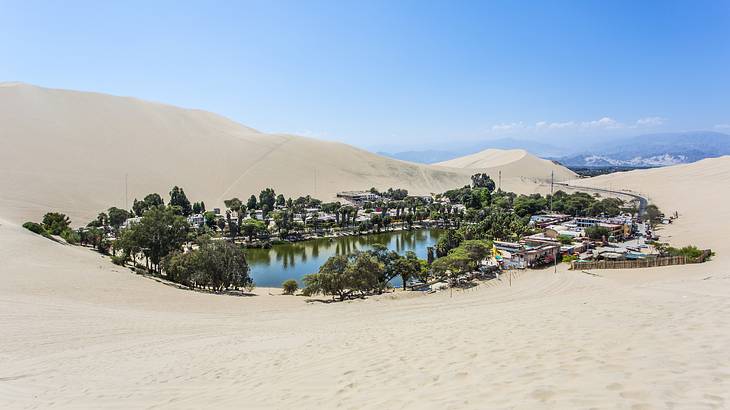
Huacachina, Ica
Built around a small desert lake, Huacachina is a small oasis village surrounded by dunes in the south of Peru. Despite attracting hundreds of thousands of tourists each year, the town only has a permanent population of about 100 people.
The natural lake that sits in the middle of the village is believed to have healing properties - many tourists choose to take the plunge in the hopes of healing injuries, and there's even a mermaid that is said to live in the lake.
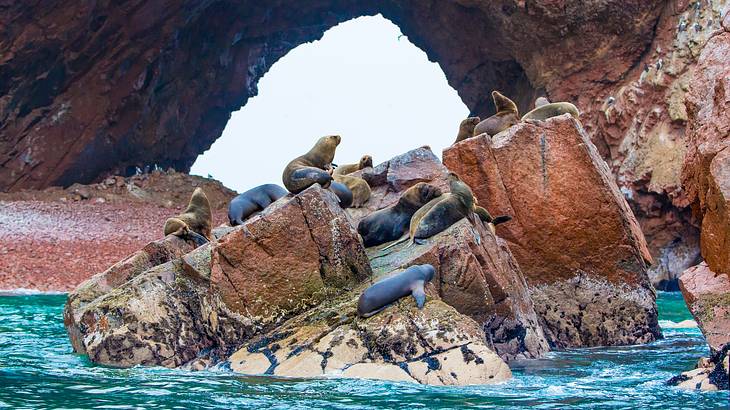
Ballestas Islands, Pisco
Just off the southern coast near Pisco, the Ballestas Islands are uninhabited by humans and a haven for marine life.
The best way to get to the islands is by taking a boat from Pisco, and you will even pass by the Paracas Candelabra geoglyph on the ride over. This is an enormous geoglyph, similar to the ones found in the Nazca desert, of unknown origin.
You will find sea lions, pelicans, and Humboldt penguins on the islands amongst plenty of other wildlife. The best part? They are widely undisturbed, which allows humans to get pretty close.
☂️ Visit Islas Ballestas with an experience
- Huacachina Oasis & Mini-Galapagos Most Reviewed Company in Peru Luxury Buses (often fully booked)
- Full Day Paracas Ica & Huacachina From Lima All Included (popular with most)
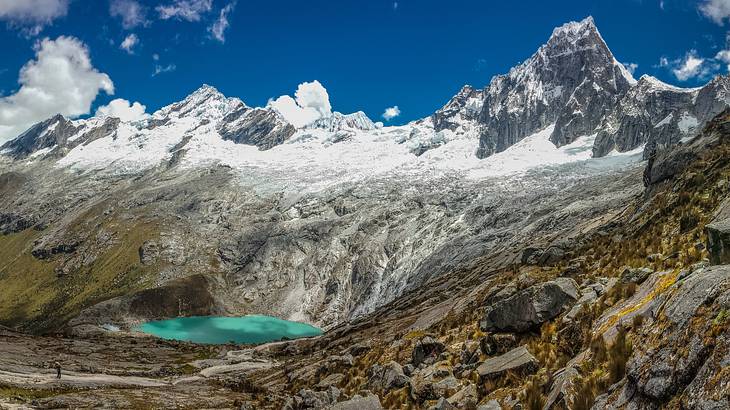
Cordillera Blanca, Huascaran National Park
Peru is notorious for its breathtaking mountain ranges, and the Cordillera Blanca is a larger range that makes up part of the Andes.
The mountains run from the north to the south, and the easiest way to access them is by making your way to Huaylas Valley, where you can hike to them.
The best way to visit is by taking a guided tour, as it is a little bit out of the way of the other major places in Peru. But your guide will be able to help you climb the mountain quickly and with ease.
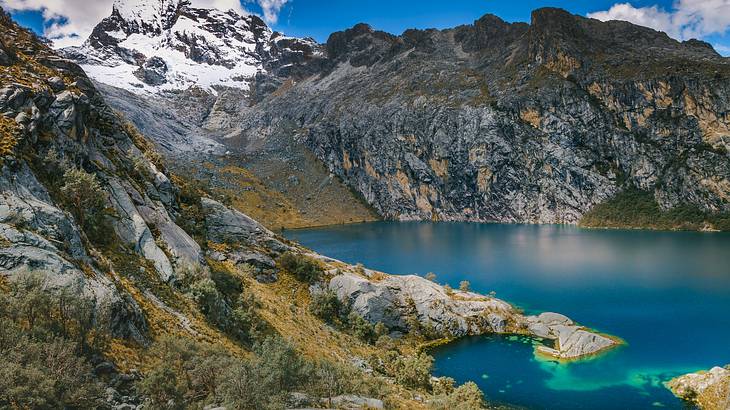
Churup Lake, Huascaran National Park
With stunning turquoise waters and an incredible rocky backdrop, it's safe to say that Churup Lake deserves its name as the prettiest lake in Peru. Located just north of Lima, this is a lake that you will need to hike to, but the picturesque scenery is completely worth it.
Part of the journey will need to be made by rock climbing, so it's best to go with a guide, but this lagoon is fairly accessible to anyone who wants to make the journey through the Andes.
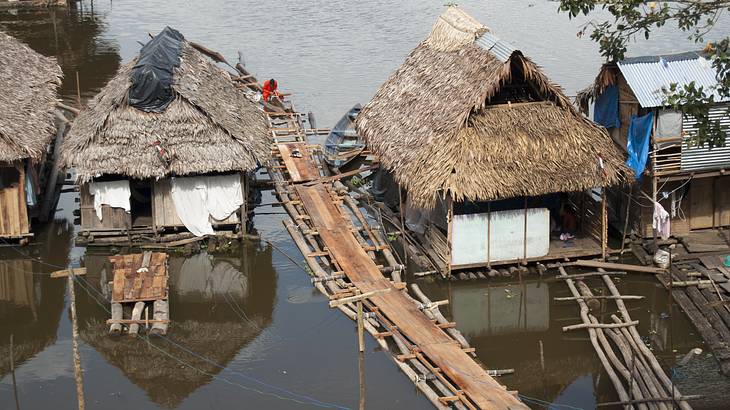
Amazon River, Iquitos
The Amazon River runs through several countries in South America, including Brazil, Peru, Colombia, and Ecuador. While most of the river and basin is in Brazil, it is possible to see it for yourself in Peru.
To see the river in Peru, you will need to take a flight to the northeast of the country and head towards Iquitos, a town nestled deep in the Peruvian jungle and Amazon Rainforest.
In particular, if you want to see the Rainforest, head to Puerto Maldonado - it is known as the gateway to the rainforest.
☂️ See Iquitos on a tour
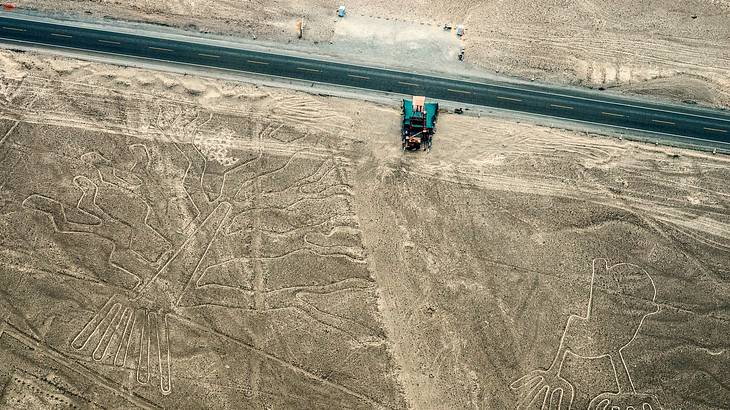
Nazca Lines, Nazca Desert
Another important archeological site in Peru is the group of Nazca Lines that can be found in the Nazca Desert in the southern part of the country. They have been a UNESCO World Heritage Site since 1994.
It is thought that people between 500 BC and 500 AD created these geoglyphs by making incisions into the floor of the desert, leaving dirt in different colors to become exposed.
The best way to see these Nazca Lines is by climbing the surrounding hills to get a bird's-eye view of them. The drawings span from simple geometric shapes to more detailed animals and plants.
☂️ Join a tour to see the Nazca Lines
- Two Day Tour From Lima - Nazca Lines Flight, Paracas, & Huacachina (highly sought-after)
- Full Day Nazca Lines, Huacachina Oasis With Buggy & Sandboard (rated highly)

Chan Chan, Trujillo
Chan Chan is one of Peru's major landmarks in the northeastern part of the Peru desert. It is thought to have been created in 850 AD by the Chimu. The area was actually the capital of the Chiman Empire until the Inca took over and the site fell to Cusco.
Because the desert was so dry, an irrigation system was needed. So, Chan Chan's structure was created - and you will also notice some incredible carvings along the outside of the impressive system.
The best way to get to Chan Chan is to take a road trip from Lima to Trujillo and then take a tour from there.
☂️ Visit Chan Chan on a tour

Gocta Waterfall, Bongara
Gocta Waterfall in Peru can only be described as a majestic natural wonder. Located where the Andes and the Amazon Rainforest meet, Peru's tallest free-standing waterfall boasts two enormous drops.
While local communities have known about Gocta Waterfall since time began, an outsider only discovered it in 2002, who then alerted the outside world to the location.
But since then, thousands of tourists have made the arduous pilgrimage to the iconic spot. The most straightforward way to get here is to take a hike from Chachapoyas.
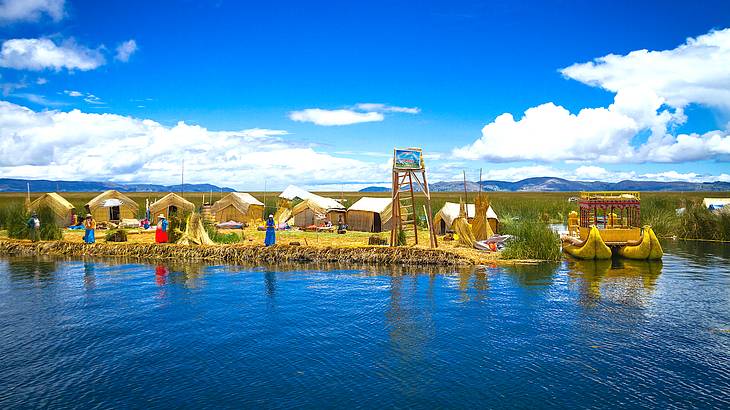
Lake Titicaca, Puno
As one of the most famous Peru landmarks (and one of the largest lakes in South America), Lake Titicaca is a colossal freshwater lake that sits on the border of Peru and Bolivia.
This is the highest navigable lake in the world and is the perfect spot to take a kayak or boat ride on the water, or you can cool off with a refreshing dip in the lake.
Many islands are dotted across Lake Titicaca, and many of them are open to tourists who want to experience their way of life.
☂️ Explore Lake Titicaca on a tour
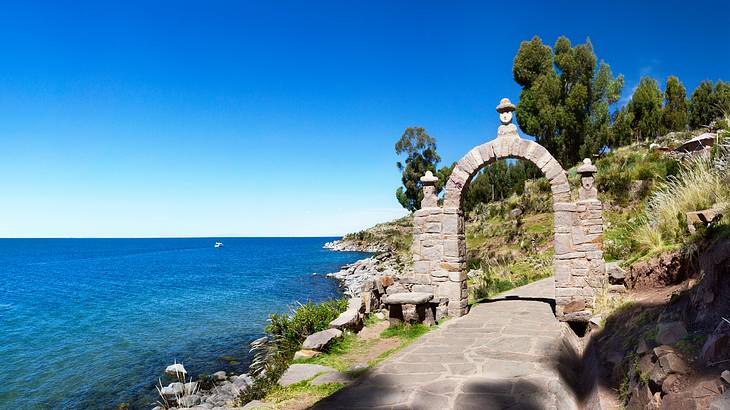
Taquile Island, Puno
Located around 45km off the shore on Lake Titicaca, Taquile Island and its inhabitants lived undisturbed for centuries. But in recent years, the island has allowed tourists to visit and discover more about this mysterious Peruvian community.
Once you have arrived by boat, there are many activities to take part in on Taquile Island. Visitors can take a boat ride, learn to make soap with locals, and take a hike to really appreciate the area's beauty.
Accommodation here is mainly through host families and hostels, but this is one of the best ways to immerse yourself in the unique culture fully.
In Summary
It's no secret that Peru is a country full of incredible beauty. From calming boat rides across Lake Titicaca that lead to intimate adventures with local communities to impressive hikes towards ancient Inca treasures, this is a country that really makes an impression, leaving you longing to return for more.
Luckily, with these 30 famous landmarks in Peru, you should have plenty of things to add to your famous landmarks bucket list for next time.
Give us feedback about this article
More visual stories related to this article:
Want to keep exploring?
Subscribe for discounts on tickets and hotels and our latest guides.
Thank you for subscribing
We will be in touch soon with discounts on tickets and hotels and our latest guides.
Want to keep exploring?
Subscribe for discounts on tickets and hotels and our latest guides.
Thank you for subscribing
We will be in touch soon with discounts on tickets and hotels and our latest guides.

